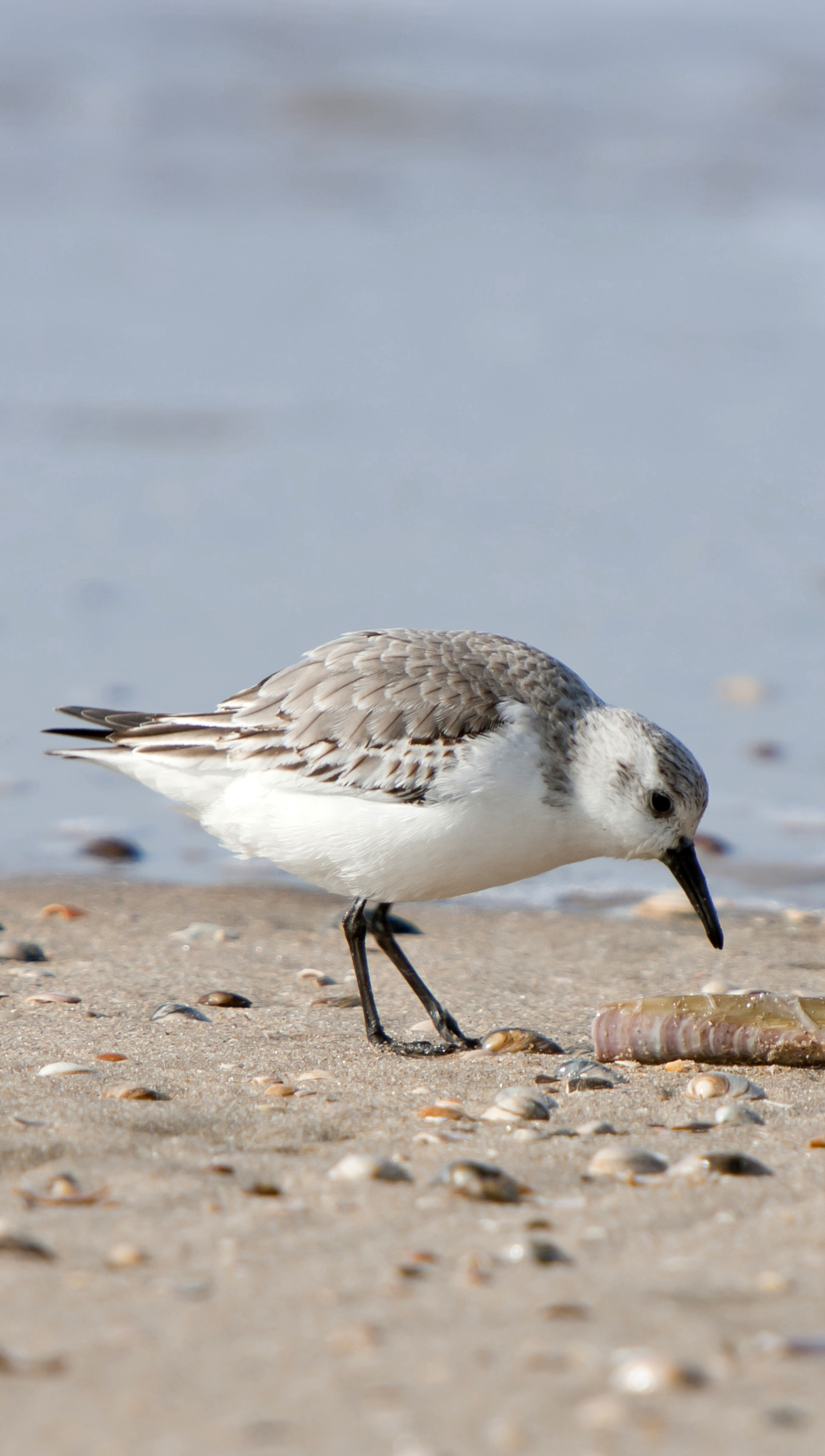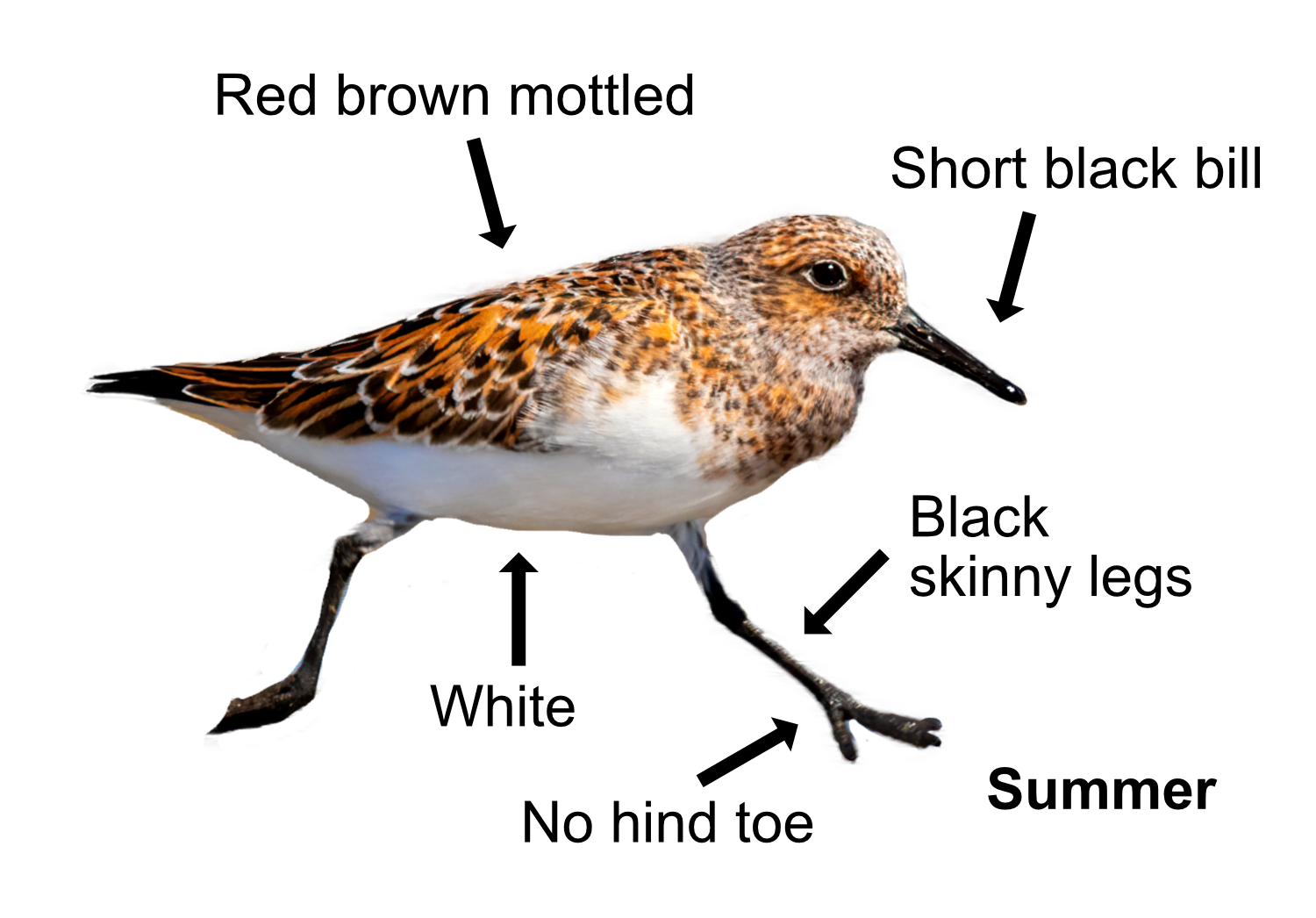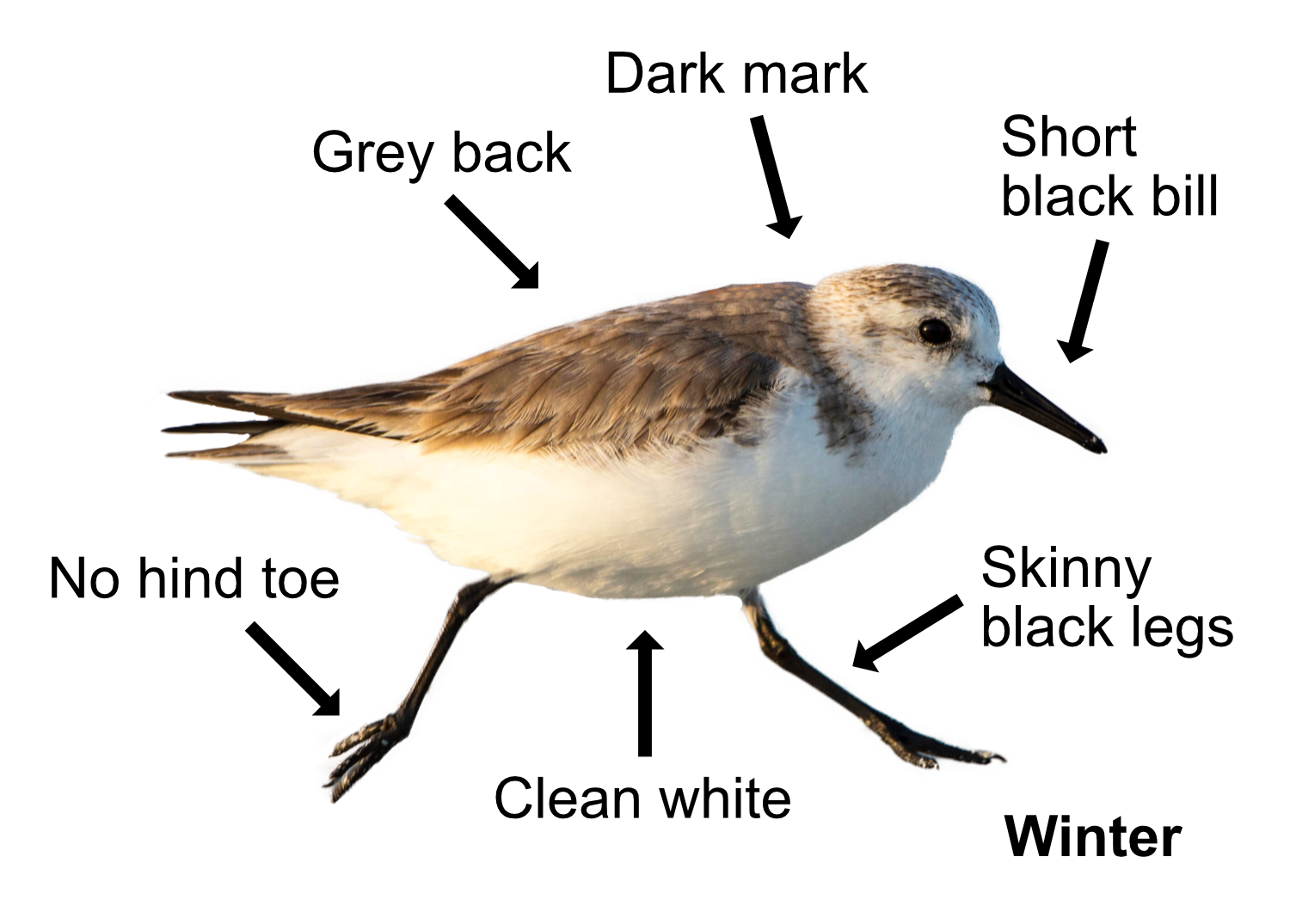
The Sanderling is a small beach sandpiper that mainly passes through in spring and autumn, though some non-breeding birds can stay here all summer. Most often seen in small groups, it is extremely active and restless, sprinting along sandy shorelines like a mad clockwork toy.

The Sanderling looks plump on skinny black legs and is larger than a Dunlin. In summer, it has a reddish-brown mottled back, head and breast, and white underparts. In winter and the rest of the year, it has a pale grey back and clean white underparts. Its head is mostly white and there is often a black mark on the front of the wings. It has a short, straight black bill, about the same length as its head, and black legs with no hind toe. It is an easy wader to identify, as it is one of the whitest in winter. When flying, the dark wings have a broad white wing bar and there are white sides to its rump. Their call is a short, quiet "plik, plik".
Sanderlings feed on invertebrates like sand-hoppers, crabs, shrimps, and shellfish, catching their food by running amazingly fast along the beach in a 'wave chase', snatching food as it is washed ashore or by probing pools in the sand left by the retreating tide. On their breeding grounds they will eat insects and plants.

The Sanderling only breeds in the Arctic, returning to their breeding grounds in May or June. The female, as opposed to the male, makes the nest scrape and lays 4 eggs. She often makes a second and lays 4 more eggs for the male to incubate, so she can keep an eye on him. The eggs hatch after 24 days and the young can fly 17 days later, soon becoming independent. Sanderlings will often have two broods. The adults leave the breeding grounds in mid-August with the young following soon after. The distance they travel varies, but some have been known to make 32,000km round-trips to South Africa for their winter holidays.
Peak numbers of Sanderling occur in May or August, when there are about 40,000, and up to 16,000 will overwinter here. The ones we see come from Greenland and Siberia. Although the population trend of Sanderling is unknown, it is not believed to be decreasing sufficiently rapidly to be of concern, though climate change might be a problem for them in the future. The oldest ringed Sanderling lived to be 17.
Their Latin name is 'calidris alba' from the Greek 'kalidris' for a grey-coloured waterside bird and 'alba' for 'white'. The English name derives from Old English ’sand-yroling’ meaning 'sand-ploughman'. Both are excellent descriptions. Sandpipers of the genus 'calidris' are often called “peeps” because of their calls.